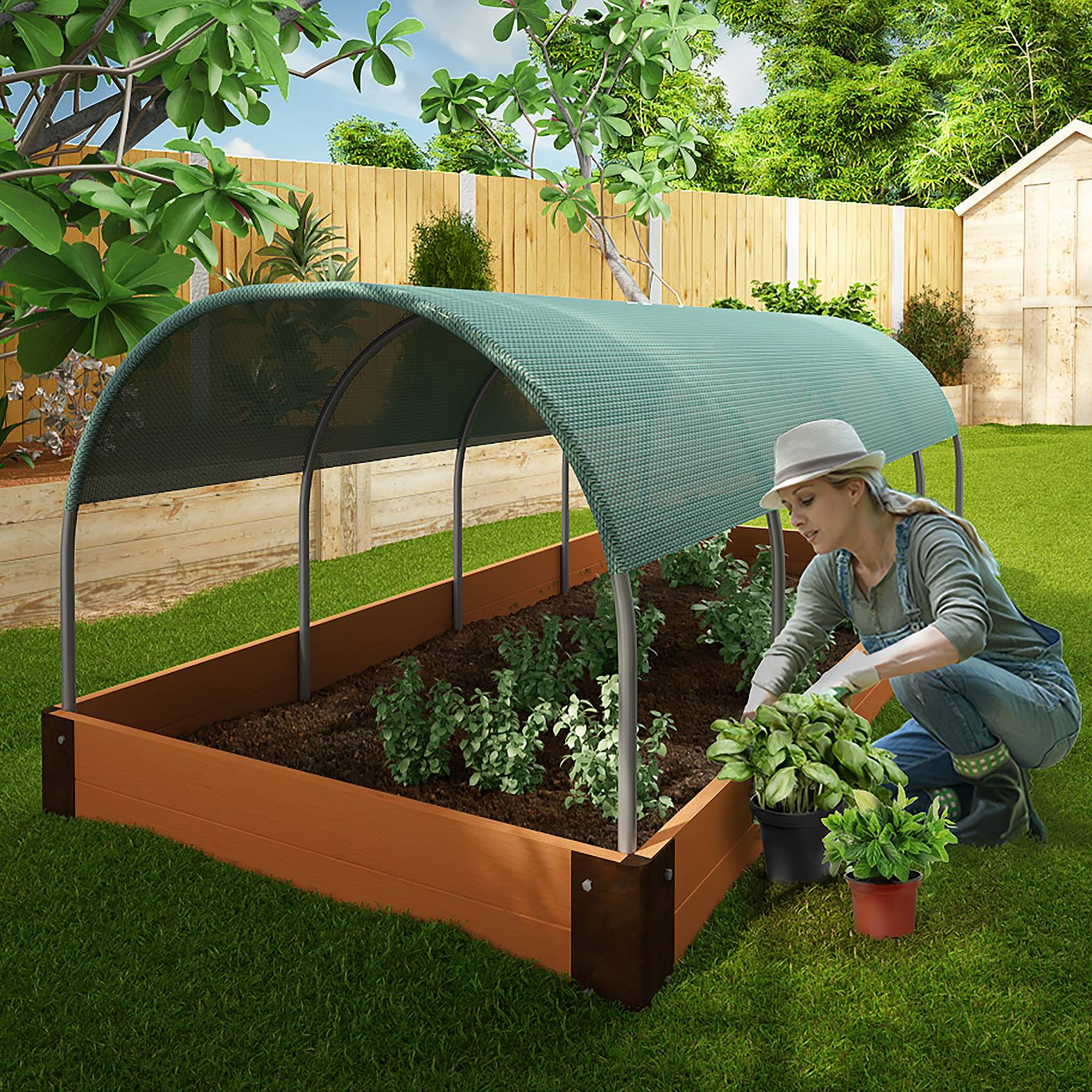5 Benefits of Using a Shade Cloth Garden Cover This Season
As the summer sun intensifies and temperatures climb, many home gardeners find themselves searching for ways to protect delicate plants from scorching heat. One proven solution is a shade cloth garden cover—a simple yet highly effective tool for ensuring vibrant, healthy growth throughout the season. In the following article, we’ll explore exactly how shade cloth works, why it’s beneficial, and the top five reasons you should consider using one in your garden this year.

Overview of Shade Cloth Garden Cover
Shade cloth is typically made of loosely woven or knitted polyester, polyethylene, or other durable fabrics designed to block varying degrees of sunlight. This material can be draped over plants, supported by frames, or installed as part of an enclosure to create a cooler, gentler environment underneath.
What Is a Shade Cloth?
A shade cloth is a specialized fabric designed to filter out a specific percentage of sunlight. It can range from 30% to 90% shade density, meaning it blocks between 30% and 90% of the sun’s rays. The right density depends on what crops you’re growing and your local climate. According to gardening experts at the University of Florida’s IFAS Extension, vegetables such as lettuce, spinach, and other leafy greens benefit from around 30–50% shade density, while more heat-tolerant plants might require less coverage.
Choosing the Right Shade Cloth for Your Garden
Selecting the best shade cloth for your plants depends on a few key factors:
- Plant Type: Different vegetables, flowers, and herbs have unique light requirements. Delicate greens often need more protection than sun-loving tomatoes.
- Regional Climate: In hot, sunny areas, you may want a higher shade percentage (50–70%) to prevent plant stress. Cooler climates might need less dense shade (30–40%).
- Durability: If your region experiences high winds, consider a robust material with reinforced edges or grommets.
- Installation Method: Decide if you’ll place the shade cloth on a hoop house, greenhouse frame, or DIY support structure. Ensure you have enough fabric to cover the designated space completely.
Benefit #1: Protects Plants from Harsh UV Rays
One of the primary advantages of a shade cloth garden cover is the protection it provides from the sun’s intense ultraviolet (UV) rays. While plants require sunlight for photosynthesis, too much direct exposure can lead to:
- Leaf scorching and yellowing
- Wilting or stunted growth
- Higher susceptibility to pests and diseases
By filtering out excessive UV rays, the shade cloth creates a balanced environment that allows adequate light for photosynthesis without overwhelming or burning your plants. This balance is especially important for young seedlings or sensitive varieties like lettuce, spinach, and certain herbs.
Benefit #2: Helps Maintain Optimal Temperature and Humidity
Sunlight doesn’t just bring brightness; it also brings heat. During peak summer months, the temperature under direct sun can quickly soar, leaving your crops stressed and dehydrated. A shade cloth helps regulate the climate underneath it by:
- Reducing Heat Buildup: With fewer rays penetrating, the area remains cooler and more comfortable for both plants and gardeners.
- Retaining Moisture: The cloth reduces evaporation, allowing soil and ambient humidity to remain at healthier levels for plant growth.
According to a study published in the Horticultural Science journal, using a 50% shade cloth on crops grown in high-temperature regions significantly decreased the leaf temperature and allowed crops to retain moisture for a longer period. This means your plants stay hydrated and resilient, and you’ll likely need less frequent watering.
Benefit #3: Improves Plant Health and Growth
By mitigating the stress factors of excessive heat and sun, a shade cloth helps your garden flourish. When plants are less stressed, they can channel energy into root development, leaf production, and fruit formation. Key ways a shade cloth supports plant health include:
- Consistent Growth Conditions: Fluctuations in temperature and light intensity can shock plants, inhibiting healthy growth. Shade cloth ensures a more stable environment.
- Enhanced Nutrient Uptake: When a plant’s leaves aren’t scorched, they can more effectively carry out photosynthesis and absorb nutrients from the soil.
- Lower Pest Pressure: While not a complete barrier against insects, the cloth can deter certain pests by limiting the visual cues (bright light on leaves) they use to locate crops.
Think of a shade cloth as a gentle sunscreen that allows your garden to thrive without the burden of too much direct sunlight.
Benefit #4: Extends Your Growing Season
Many gardeners face challenges when temperatures spike early or persist late into the season. If it’s too hot, seeds may not germinate well, and mature plants can bolt (flower and go to seed prematurely) or become bitter-tasting. A shade cloth garden cover can help:
- Start Earlier in Spring: Lower-density shade cloths can buffer harsh, early-season conditions. You can plant earlier because your seedlings won’t be hit with sudden heat waves.
- Grow Later into Fall: While shade cloth is often used to manage summer heat, it can also protect late-season crops from sudden shifts between hot days and cooler nights, effectively prolonging your harvest.
Extending the growing season allows you to get more from your garden, trying additional plant varieties and enjoying fresh produce for a longer period each year.
Benefit #5: Reduces Water Evaporation and Conserves Resources
Excessive evaporation is a constant concern in many gardens, especially in hotter, arid climates. A shade cloth helps cut down on water loss by:
- Shading the Soil: Less direct sunlight means the topsoil remains cooler and retains moisture longer.
- Decreasing Wind Exposure: If installed as a covering with side panels, the cloth can act as a windbreak, further reducing evaporation rates.
- Promoting Eco-Friendly Gardening: When you use water more efficiently, you’re practicing sustainable gardening methods. This not only saves you money on water bills but also conserves a precious resource.
Additionally, by lessening the rate of evaporation, shade cloth makes each watering session more effective. You won’t need to water as frequently, and your plants will still thrive.
Conclusion
A shade cloth garden cover offers an excellent way to protect your garden from the unforgiving heat of the season. From shielding plants against harmful UV rays to conserving valuable water, there are plenty of compelling reasons to integrate this tool into your gardening routine. By choosing the right shade density for your plants and ensuring proper installation, you can create an optimal environment that supports healthier, more productive crops.
Ready to take the next step? Consider adding a shade cloth to your garden setup and see how it transforms your growing experience. If you found these tips helpful, leave a comment below, share this article with fellow gardeners, or subscribe to our newsletter for more expert advice. Wishing you a bountiful harvest this season!

